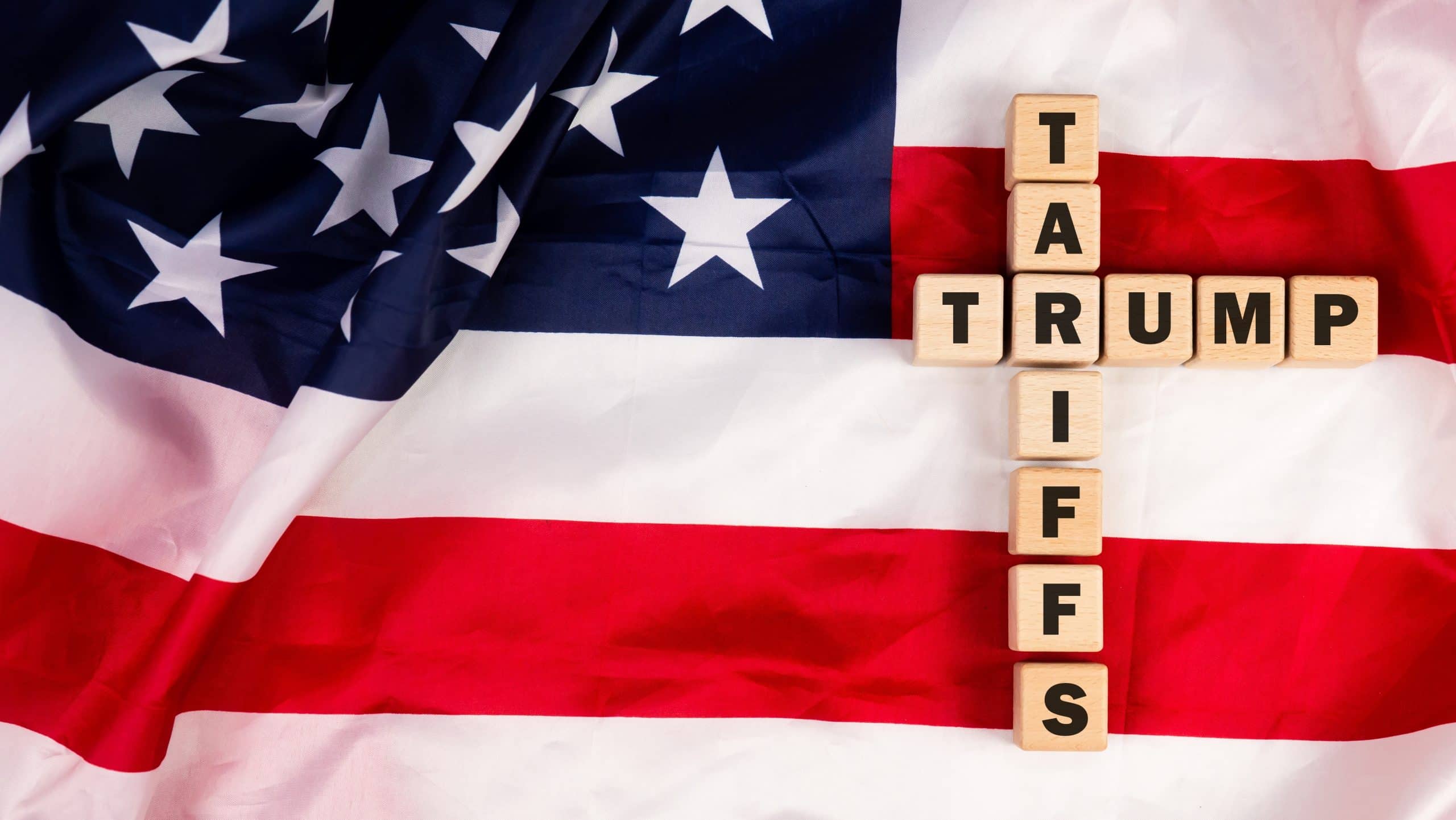The Impact of Trump’s New Tariffs on Stock Market Performance and Economic Stability
In recent times, markets have felt the weight of President Trump’s new tariffs, causing stocks to close lower. Investors remain apprehensive as the impacts of these tariffs ripple through the economy. These tariffs are part of broader trade negotiations and policies that could lead to significant economic shifts both domestically and internationally.
The relationship between tariffs and stock market performance is complex. Tariffs typically increase costs for companies that import goods and materials, leading to higher prices for consumers. This can result in reduced spending, which in turn slows economic growth. When the stock market reacts negatively to these kinds of developments, it reflects the uncertainty felt by investors. For instance, the most recent weak jobs report has compounded these fears, indicating a slowing job market that can affect consumer confidence.
Here are a few key effects of Trump’s new tariffs and the weak jobs report on stock market performance:
-
Increased Production Costs: When tariffs are imposed, companies may face higher costs for imported goods. This usually leads to increased prices for consumers, which can dampen spending. If consumers buy less, companies see lower revenues, ultimately impacting stock prices.
-
Investor Sentiment: The uncertainty surrounding new tariffs creates a cautious atmosphere in the market. Investors may pull back on making significant moves, preferring to wait and see how policies play out. Negative sentiments like these generally lead to declines in stock prices.
-
Weak Jobs Report: A disappointing jobs report signals potential economic slowdowns, which can contribute to a bearish sentiment in the stock market. A sound job market typically drives consumer spending. If jobs are not growing, businesses may earn less, leading to declining stock values.
-
Sector-Specific Impacts: Certain sectors are more vulnerable to tariffs than others. For example, companies in manufacturing might feel the pinch more acutely than those in technology or services. As a result, stock prices in these affected sectors may decline more sharply.
With the recent announcement of additional trade tariffs, the U.S.-China trade tension remains in focus. This ongoing dispute has implications not just for the U.S. economy, but also for global markets. Many foreign markets are closely linked to the performance of U.S. stocks, and volatility can create a cycle of fear that spreads quickly. Global trade dynamics have shifted, making many investors wary.
The consequences of tariffs extend beyond immediate price increases. They can also lead to longer-term strategies among businesses. Companies may look for alternative suppliers or increase automation to counteract the rising costs caused by tariffs. While these shifts can stabilize companies in the short run, they might displace workers and affect local economies in the long run.
Another critical factor is how these tariffs impact international relations. A fragile trade environment can lead to retaliatory measures from other countries, further escalating tensions. This tug-of-war can instill a sense of unpredictability in the markets, compelling investors to proceed with caution.
The labor market also plays a crucial role in this equation. A weak jobs report indicates that fewer jobs were created than expected, leading to concerns about consumer spending and economic growth. Investors keep a close watch on labor market statistics because they are a direct reflection of economic health. If unemployment rises or wages stagnate, consumer confidence tends to decline, leading to tighter spending.
The volatility in stocks following Trump’s new tariffs and weak jobs report showcases the interconnectedness of trade policies, market performance, and economic stability. As you consider your investments, keep these factors in mind. Analyzing how government policies affect the economy and market trajectories can provide you with a clearer picture of potential risks and opportunities ahead.
It’s crucial to stay informed about changes in trade policies and their potential fallout. As history shows, markets respond dynamically to economic indicators and government decisions alike. Being proactive and understanding these relationships can help you navigate the complexities of investing during turbulent times.
Analyzing the Effects of a Weak Jobs Report on Investor Confidence and Market Trends
Investor confidence often hinges on economic indicators, with a key focus on the jobs report. When a weak jobs report is released, it can send ripple effects throughout the market, leading investors to reassess their strategies. A disappointing jobs report can reveal underlying economic issues, prompting a sell-off in stocks as worries about growth arise.
One significant impact of a lackluster jobs report is the immediate response from the stock market. If the data shows fewer jobs created than anticipated or an increase in unemployment, investors may fear that consumer spending will decline. As consumer spending is a major driver of economic growth, a weak jobs report can lead to lower forecasts for corporate earnings. This can result in a decline in stock prices as investors aim to mitigate potential losses.
Specific factors entwined with a weak jobs report include:
-
Investor Sentiment: A negative jobs report can trigger a loss of confidence among investors. If they believe the workforce is not expanding, they might expect reduced profits for businesses, leading them to pull back on stock purchases.
-
Market Volatility: Stocks tend to become more volatile following a disappointing jobs report. The urgency to sell can create swings in stock prices, making the market less stable and harder to predict.
-
Sector Reactions: Certain sectors may be hit harder than others depending on the context of the jobs report. For example, a surge in unemployment typically impacts consumer goods and retail stocks more than technology stocks.
-
Policy Implications: Investors closely monitor weak jobs reports for indications that the Federal Reserve may alter its monetary policy. An expected rate cut may initially excite investors; however, prolonged economic weakness often leads to concerns over a recession.
As a direct consequence of lower confidence, you might notice heightened activity among investors seeking safe-haven assets. Gold, for instance, often attracts attention when economic indicators falter, serving as a hedge against market downturns. The bond market may also see increased interest, particularly with treasury bonds, as investors look for lower-risk options during uncertain times.
Moreover, the weak employment figures can signify that businesses are struggling to hire or retain talent. This situation may arise due to various barriers such as rising business costs, inadequate incentives for hiring, or simply a mismatch between available jobs and the skills of the workforce. If jobs are not available or are perceived to be undesirable, the impact can spread through the economy, impacting not just the sectors involved but reducing overall economic momentum.
Understanding consumer behavior during periods of weak job growth is also crucial. Generally, when people feel uncertain about their job security, they may cut back on spending. This cautious approach can lead to decreased sales for businesses and could result in further layoffs, creating a feedback loop that impacts the overall economy.
A weak jobs report tends to lead to an erosion of investor confidence and can steer market trends downward. The interplay of sentiments and economic fundamentals drives the market’s response, making it essential for investors to stay informed and adaptable. You should pay keen attention to not only the headline numbers in a jobs report but also the context and potential implications for future economic activity.
Ultimately, as an investor, it’s critical to consider the broader picture when a weak jobs report surfaces. Analyzing trends and market reactions can provide valuable insights that inform your investment strategy. Keeping abreast of economic indicators, investor sentiment, and market movements can help you navigate the complexities of investing in an ever-changing landscape.
Conclusion
The recent downturn in the stock market is a clear reflection of the uncertainty stemming from Trump’s new tariffs and the disappointing jobs report. Investors are grappling with the implications of these tariffs, which have raised concerns about the potential for slowed economic growth and escalating trade tensions. The tariffs can lead to increased costs for consumers and businesses alike, prompting fears of inflation and reduced consumer spending. As a result, many are reassessing their investment strategies and looking for safer options amid the turbulence.
At the same time, the weak jobs report has further dampened investor sentiment. A lackluster jobs market can signal broader economic issues and diminish consumer confidence. When people are unsure about job security and income stability, they tend to limit spending, which directly impacts corporate profits. Investors are instinctively cautious, seeking clarity and stability before making significant commitments to the stock market.
Given these dynamics, it’s crucial for you, as an investor, to stay informed and adaptable. Understanding the interplay between government policies, such as tariffs, and economic indicators like job growth will arm you with insights to navigate this landscape. While volatility may define the markets in the short term, keeping a close watch on developments can help you make more strategic decisions. The road ahead may seem unclear, but being proactive and informed can turn moments of uncertainty into opportunities for growth in your investment journey.
Comparison, examination, and analysis between investment houses
Leave your details, and an expert from our team will get back to you as soon as possible
* This article, in whole or in part, does not contain any promise of investment returns, nor does it constitute professional advice to make investments in any particular field.
To read more about the full disclaimer, click here- Articles
- •
- 13 Min Read
- •
- ago 3 minutes
 A VACANCY ON THE FED IS OPENING EARLY AS TRUMP URGES BOARD TO ‘ASSUME CONTROL’ IF POWELL DOESN’T CUT RATES
A VACANCY ON THE FED IS OPENING EARLY AS TRUMP URGES BOARD TO ‘ASSUME CONTROL’ IF POWELL DOESN’T CUT RATES
The Implications of an Open Vacancy on the Fed The Federal Reserve, often referred to as the Fed, plays a
- ago 3 minutes
- •
- 13 Min Read
The Implications of an Open Vacancy on the Fed The Federal Reserve, often referred to as the Fed, plays a
- Articles
- •
- 18 Min Read
- •
- ago 13 minutes
 S&P 500 SINKS 1.6%, ITS WORST DROP SINCE MAY, FOLLOWING SURPRISINGLY WEAK HIRING NUMBERS AND TRUMP’S TARIFF ROLLOUT
S&P 500 SINKS 1.6%, ITS WORST DROP SINCE MAY, FOLLOWING SURPRISINGLY WEAK HIRING NUMBERS AND TRUMP’S TARIFF ROLLOUT
The Impact of the Recent The recent downturn in the S&P 500, which sank 1.6% marking its worst drop since
- ago 13 minutes
- •
- 18 Min Read
The Impact of the Recent The recent downturn in the S&P 500, which sank 1.6% marking its worst drop since
- Arik Arkadi Sluzki
- •
- 12 Min Read
- •
- ago 35 minutes
 LINA KAHN IS TAKING A VICTORY LAP OVER THE FIGMA IPO
LINA KAHN IS TAKING A VICTORY LAP OVER THE FIGMA IPO
Lina Khan’s Strategy and Impact Following the Figma IPO Lina Khan, chair of the Federal Trade Commission (FTC), has emerged
- ago 35 minutes
- •
- 12 Min Read
Lina Khan’s Strategy and Impact Following the Figma IPO Lina Khan, chair of the Federal Trade Commission (FTC), has emerged
- Articles
- •
- 18 Min Read
- •
- ago 48 minutes
 INVESTORS REACT TO KUGLER’S RESIGNATION, FIRING OF BLS COMMISSIONER
INVESTORS REACT TO KUGLER’S RESIGNATION, FIRING OF BLS COMMISSIONER
Investor Sentiment: Analyzing Reactions to Kugler's Resignation and the Dismissal of the BLS Commissioner The recent resignation of Kugler and
- ago 48 minutes
- •
- 18 Min Read
Investor Sentiment: Analyzing Reactions to Kugler's Resignation and the Dismissal of the BLS Commissioner The recent resignation of Kugler and












